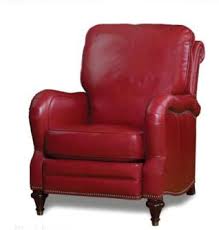Mountain climbing or Mountaineering is an activity that involves crossing or going over mountainous terrain. It is not an ultralight activity and requires several gears for survival and for making your adventure safe. Choosing the right products to take on your mountain climb can be difficult; weight also counts as a crucial factor. The type of products you take with you depends on where you are heading and for how long. A few things to keep in mind before you make a list is, the length of your climb, the weather forecast, and how remote the location is. To make it easy for you, we have made a list of 7 must-have products every mountain climber should have.
Navigation Equipment
Carrying navigation tools is an essential part of your check-list. These tools are not only used for guiding the routes but also come most in handy in case of any emergency. For example, if you get stuck at some point in your climb, with the help of these tools, you can communicate with emergency responders. Mountain climbers must carry navigation equipment with them and must know how to use them properly. Some of the most basic types of equipment include maps, compass, altimeter, GPS device, and PLBs, and satellite communicators.
Map
Maps incorporate a great deal of information about an area or domain that one can not memorize or replace with a written description or a tiny screen. A physical topographic map gives you a bigger picture, needs no electricity, is not fragile, and can be carried around easily in a cover. If you carry a battery-operated device for mapping, then it is essential to take extra batteries, and even then, do keep one topographic map with you as a backup.
Sun Protection Gear
If you do not want to expose yourself to issues like sunburn, snow-blindness, skin cancer, and cataracts, then you need to carry sun protection gears, readily available online on websites like SportzBits, with you while going on the climb. It includes sunglasses, sunscreen, and sun-protective clothes.
Compass
A compass is used by mountain climbers to acclimatize them with the map and the landscape. It is easy to use the equipment, which serves different purposes like measuring, taking, matching, and following field bearings with it. Accessing a compass today is not hard at all as they are readily available on smartphones, wristwatches, and GPS devices. You can also get a separate electronic compass if you like.
Altimeter
A good mountain climber understands the critical role elevation plays in navigation. If you have a topographic map and a device for height with you, then almost all of your navigation problems are solved. Today, the most common type of altimeters are the ones with silver silicon, and they are capable of using GPS satellite signals, or measuring air pressure, or doing both. No matter whether you are on a trail, a ridge, or a stream, with a useful altimeter tool, you can easily navigate your way through.
GPS Device
GPS devices have transformed the world of navigation. Today, these GPS devices are readily available in smartphones, tablets, and other electronic devices. They give accurate locations with a digital map and are extremely helpful for climbers. You can also download digital maps on your phones or tablets and use them in the wilderness where there are no cell towers. If you do not want to carry a phone, then you can also get a separate GPS device, which only serves one purpose, which is providing you directions. Because all these devices are digital, you need to keep them protected from rain, and always keep backup batteries.
PLBs and Satellite Communicators
When one enters into the wild, they should be as much self-reliant as possible. You should keep all the necessary types of equipment packed, but should also be ready for any emergency. Regular cell phones do not work in most wild areas as there aren’t cell towers everywhere, so in case you get into trouble, there must be a way for you to communicate or call for help. PLBs and satellite communicators are for this purpose; they determine the location of the climber using GPS and send a message across using commercial or government satellite signals. These devices have saved the lives of many climbers.
First Aid Kit
When you go on adventures like mountain climbing, you must keep yourself prepared for any incident; this includes injuries and sickness. For this, one needs to pack a first aid kit with them before they go on the climb. But, carrying one is not enough; one should also know how to use the first aid kit. Many climbers opt for wilderness first aid or early responder skills programs to learn how to tackle such situations. When you are in the mountains, you cannot get instant medical help as it is most hours or days away. That is why packing a compact, and durable first aid kit is necessary. A basic kit includes things like bandages, gauze pads and dressings, skin closures, tapes, antiseptics, roller wraps, blister prevention, and treatment items, gloves, needles, tweezers, nonprescription tablets like painkillers and anti allergies, and your prescription medicines. Make your first aid kit according to the length of your trip.
Headlamp
The headlamp is a natural alternative for a flashlight for mountain climbers, as it requires no hands and is for anything from climbing to cooking. Even if you plan to hike during the day before dark, you should always carry a headlamp, and also a backup if possible. The headlights available today mostly come in LED bulbs, which are far better than the kind of lamps there used to be before. LED bulbs have a very long life, but after all, they are batteries, so you should always carry extra batteries with you. If your headlamp is rechargeable, then make sure to charge it to full before your climb. Almost all models available today are weatherproof, can be used for doing close-up work like basic chores, and can be pointed up for looking in the distance. Some models also come with night vision.
Shelter
Carrying shelter is an integral part of every climber’s must-have list. These keep one protected from rain, wind, and unexpected weather conditions. Several kinds of gears fall under this category. The most common ones are the single-use ivy sacks; these are made of heat-reflective polyethylene and weigh less than 4 ounces, making them easy to carry. A tent also serves as a good shelter, only if you take it around with you at all times, the one left behind at the base camp does not count. Insulated sleeping pads are also great for reducing heat loss while lying or sitting in wet or snowy terrains. Sleep blankets can also keep the body warm and keeping one out of the wind; they are also quite cheap and light in weight. Climbers who only climb during the day, also keep a bevy sack with them, as it is lightweight and protects one from winds, and provides warmth in cold seasons.
Sunglasses:
It is advised to wear sunglasses whenever one is outside, and it is bright. The reason for this is because, in alpine countries, you can quickly burn your eyes if they are not protected. Our eyes are highly vulnerable to radiation, and if exposed to direct sunlight, our corners can soon burn or get discomforted, which can result in extreme pain and conditions like snow blindness. It is why wearing high-quality sunglasses is crucial. Even if you feel that the weather looks cloudy, do not take your glasses off, as ultraviolet rays can get through the layers of the clouds. So wherever you go on your climb, whether there is ice, snow, water, or high altitude, make sure to keep your eyes protected with sunglasses. You should also carry a spare, in case of any emergency.
Sun-Protective Clothes:
Did you know that sun-protective clothes give you more protection than sunscreen? The most common types of clothes climbers wear when going on sunny glacier climbs are long underwear or wind garments. You might think that wearing long underwear would be uncomfortable, but it is still better than the hassle of putting sunscreen now and then. Sun-protective clothes have a UPF rating, which protection from ultraviolet rays. A UPF 50 rated piece of cloth only allows 1/50th of the ultraviolet radiation to get through and touch your skin. Sun-protective clothes do a decent job of protecting one from UV rays, which a standard t-shirt or pants can not do. These clothes are highly necessary for those with sensitive skin.
Sunscreen
Having sunscreen is a must for every climber. Natural pigmentation varies from person to person, to the amount of sunscreen one person requires can not be determined easily, but no matter what kind of skin you have put on sunscreen is crucial. A sunscreen keeps our skin protected from skin diseases and skin cancers. It is suggested to use sunscreen while going on a climbing that has a broad-spectrum and can block both ultraviolet A and ultraviolet B rays. UVA rays are responsible for causing skin cancer, whereas UVB rays can cause sunburn. If you are in an area near water or snow, use sunscreens with SPF 50 and apply it generously on thin-skinned areas like ears and nose. For general sunburn protection, use a sunscreen with SPF of at least 30. No sunscreens claim to be waterproof or sweatproof, the best ones have a water-resistant of unto 80 minutes, so you must keep reapplying the sunscreen frequently. If frequent applying sounds like a hassle to you, then apply a heavy coat in the beginning, and re-apply whenever possible. You should use sunscreen to all exposed skin, including your nose, chin, and the insides of your ears and nostrils.
Fire
Carrying the necessary items for starting an emergency fire should be a must-have for every mountain climber. You can either use the old methods of making fire with matches or use disposable butane lighters. Fire-Starting pieces of equipment are capable of fast igniting fire in wet woods, the most common fire-starters are cotton balls soaked in petroleum jelly, heat tabs, and wood soaked in wax or chemicals. If you are climbing to areas which are on high altitude, like on a glacier, then it is advised to carry a stove with you for an emergency.
Extra Food and Water
Food is necessary for survival; whether you are going on a short trip or a long, it is always advised to keep some extra food with you in case of emergencies like an injury, foul weather conditions, or faulty navigation. When going on a short trip, have at least one day of the extra food supply. When going on a long trek, keep enough food considering the number of people in your group. It is also crucial for clod terrains, as food provides warmth. Keep foods that do not require cooking, can be stored for long periods, and can be easily digested. You can keep things like dried fruits, nuts, candies, granola bars, etc. If you are carrying a stove with you, then take instant-food packets, and instant tea or coffee sachets. Similar to food, having enough water is also necessary. It is always required to carry sufficient water, and also know the techniques of purifying additional water. Before you begin your climb, fill your water containers. If you find water during your climb, then make sure to filter it before drinking. This can be done using purifying chemicals or by boiling. An average person requires 1.5 to 3 quarts of water daily for survival, and in hot weather, this can go till six or more quarts. Always have enough water keeping cold, heat, altitude, and emergencies in mind.








